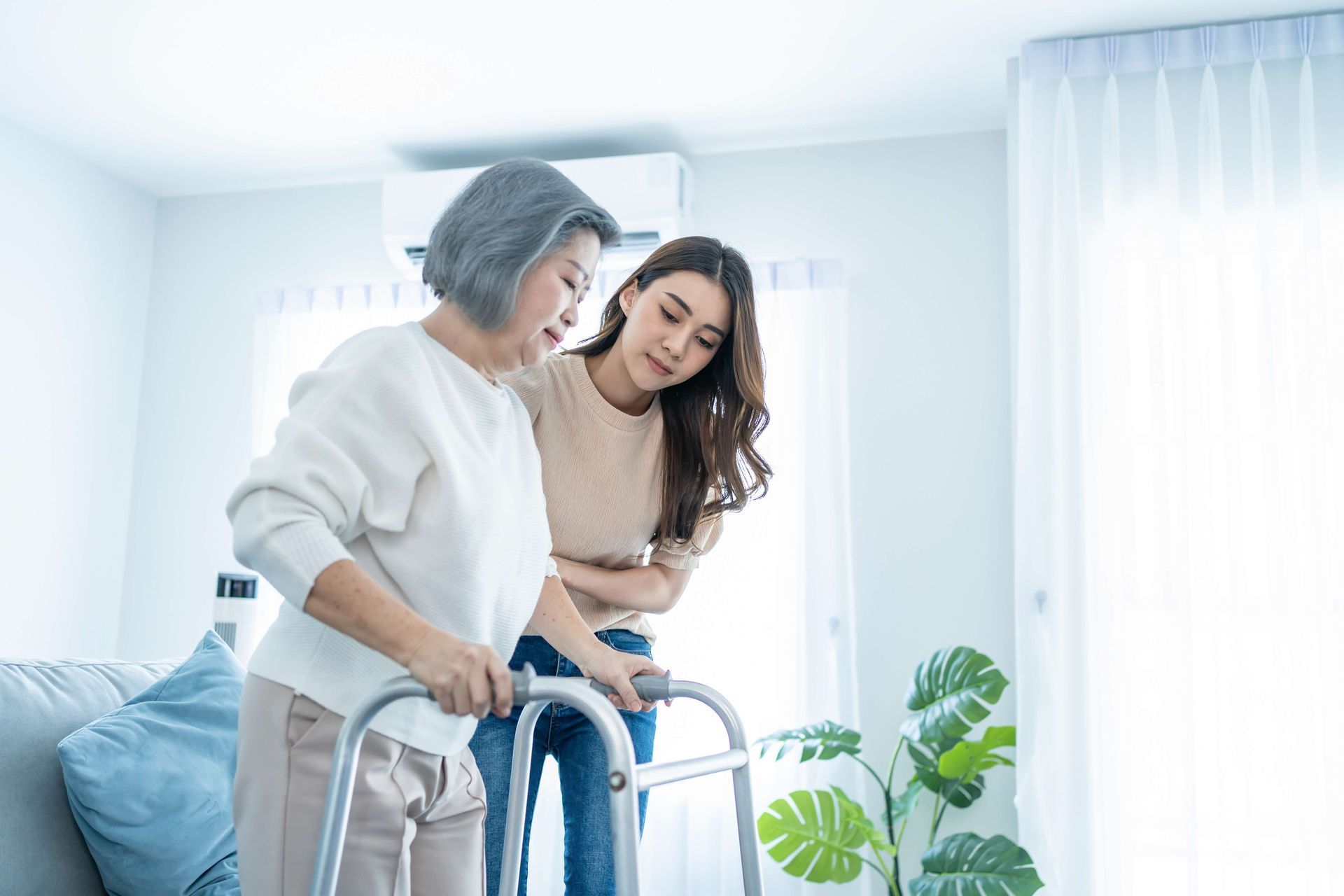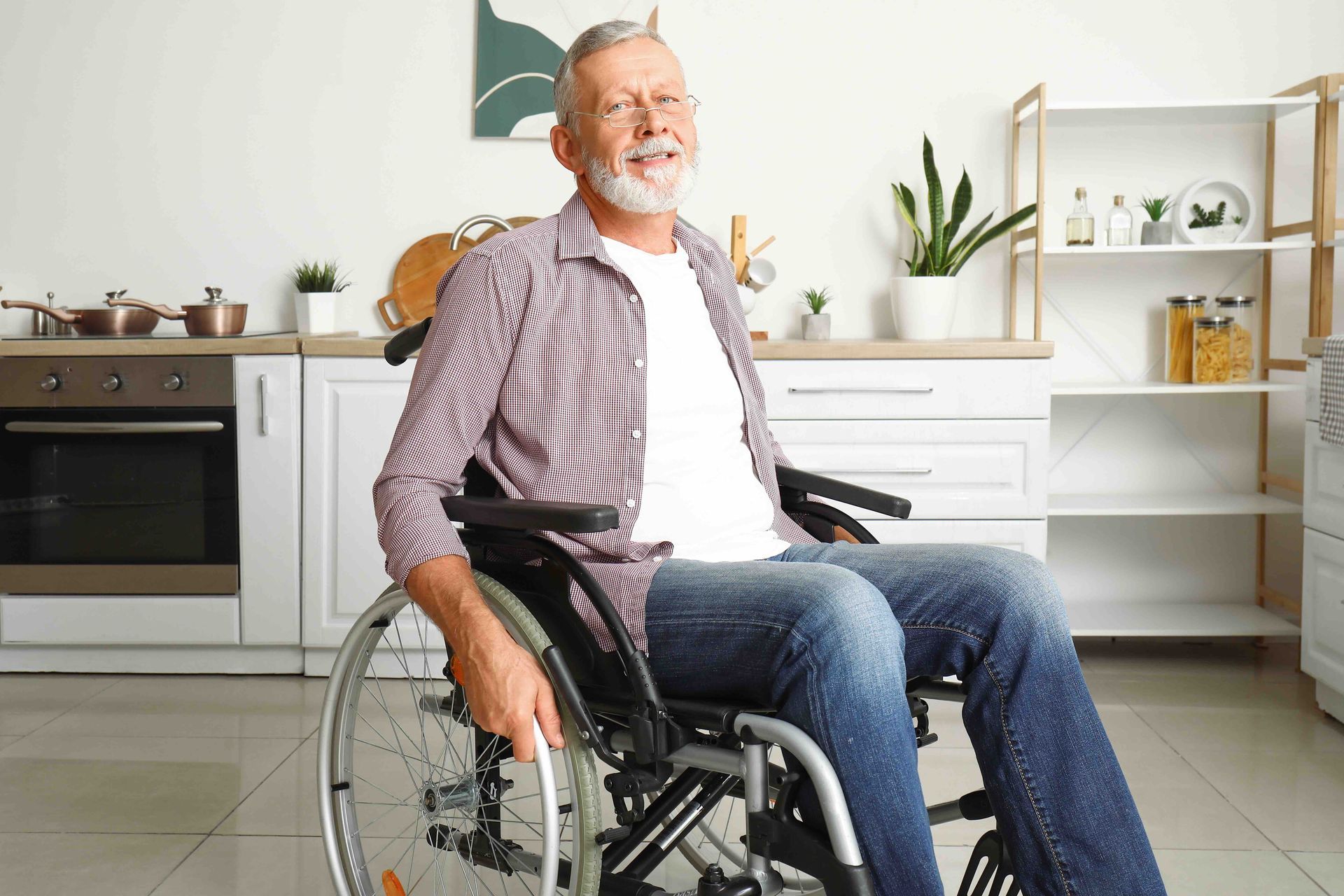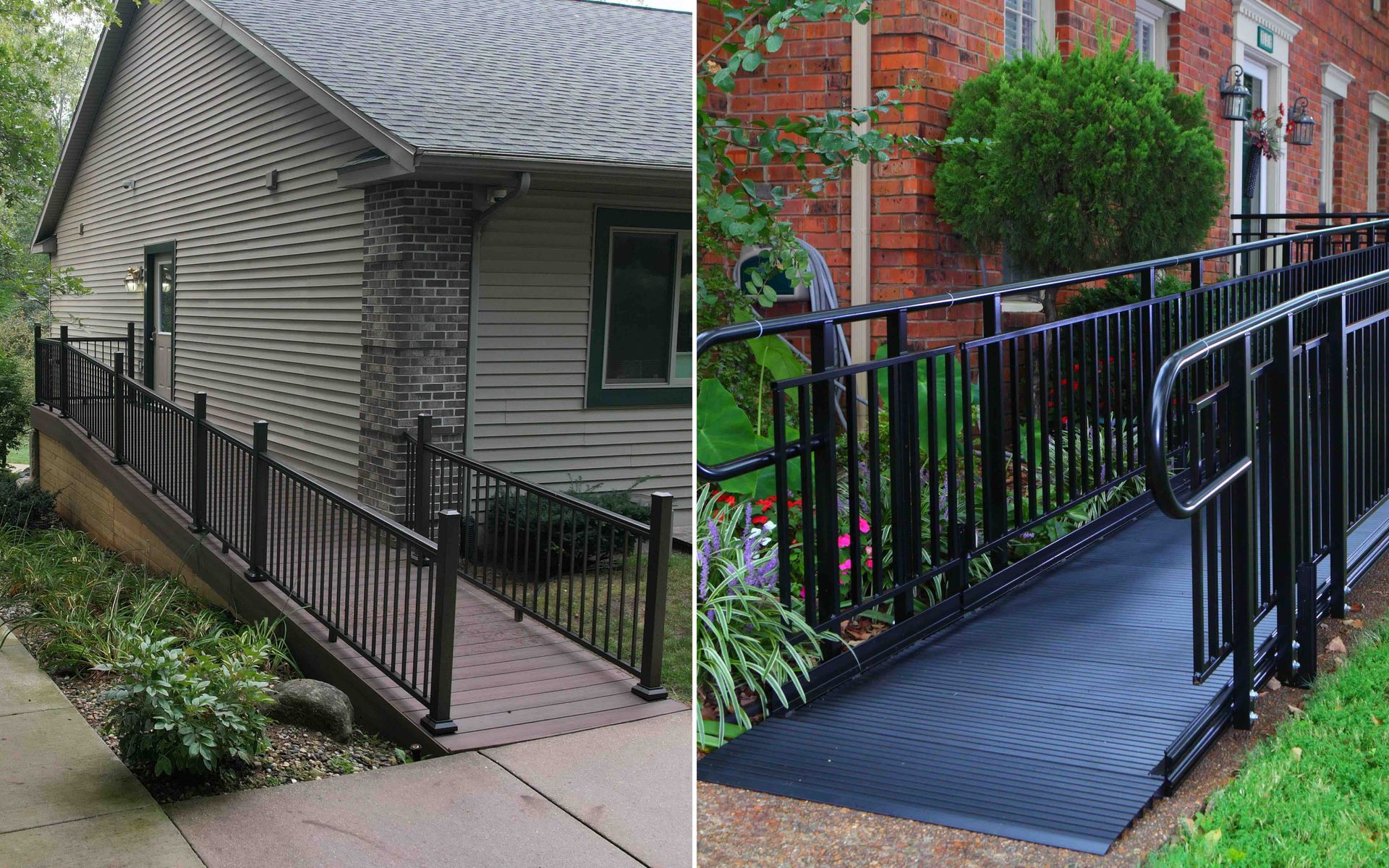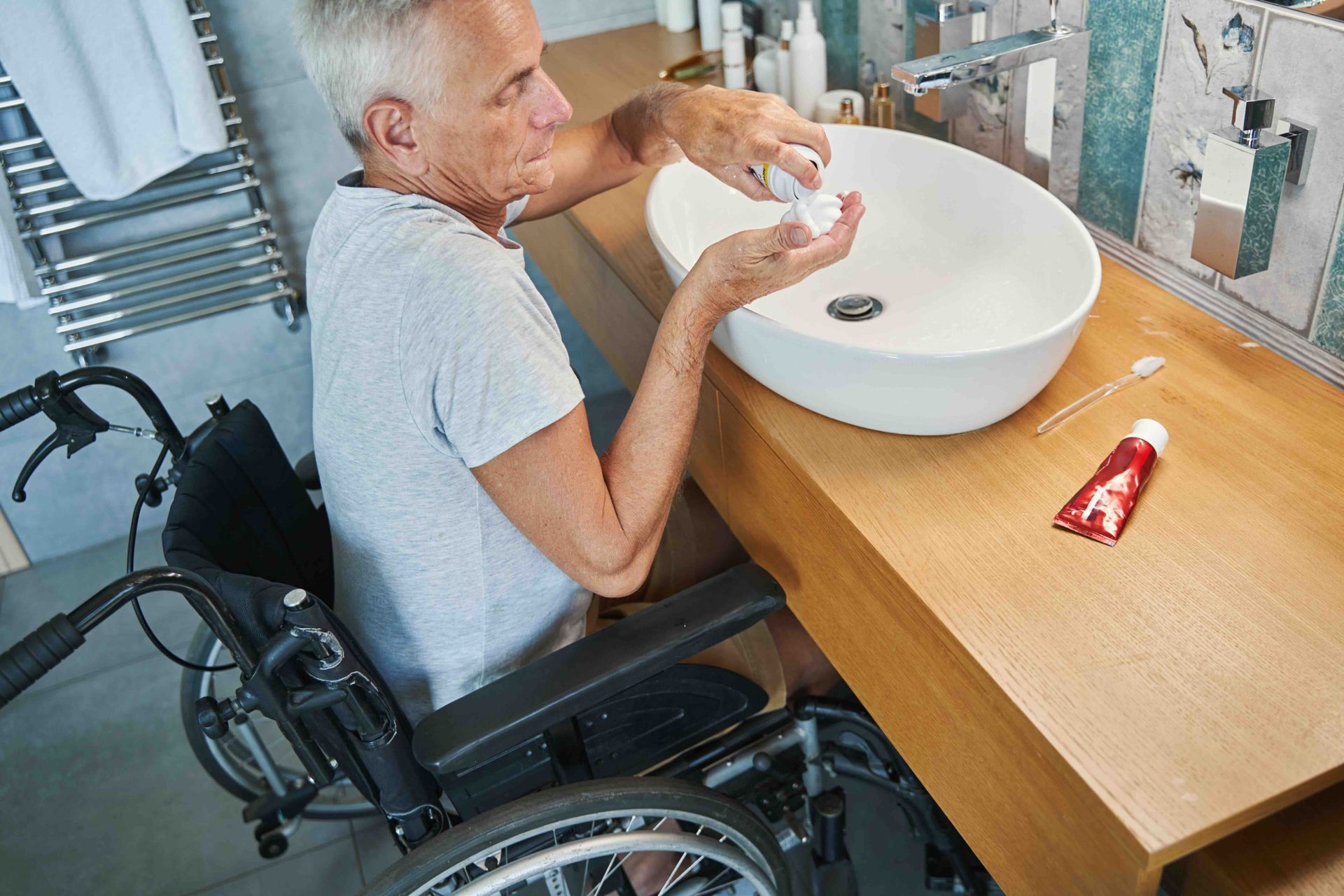Caring for a sick loved one is undeniably challenging. This complexity intensifies when wheelchair dependence becomes a part of their life. The degree of wheelchair use varies widely, from constant dependence to occasional outdoor necessity. This diversity demands tailored care approaches.
Understanding the specific reasons behind your loved one’s wheelchair use is crucial. This knowledge will guide your adjustments to their daily routine and environment. Remember, every individual’s needs are unique, and a personalized care plan is required.
Wheelchair ramps are essential for people who use wheelchairs. Inside homes, ramps help people get to different floors without stairs. This makes it easier to move around and be independent. Ramps make it possible to go into buildings, parks, and other places. Ramps help people get out and enjoy their lives. They give people more freedom and make it easier to do things independently.
Proper Lifting Techniques
Lifting someone who relies on a wheelchair requires specific techniques to protect both the caregiver and the person being lifted. It's essential to prioritize safety and prevent potential injuries.
To begin, always assess the situation and ensure you have adequate assistance if needed. Proper body mechanics are crucial. Keep your back straight and bend at the knees to maintain a strong lifting posture. Position yourself as close to the person as possible to minimize strain on your back. Remember, you should be using your leg muscles for the lifting, not your back.
When initiating the lift, maintain a steady and controlled motion. Avoid twisting your body during the process, as this can lead to injuries. It's also important to communicate with the person you're assisting. Let them know what you're doing and when you're about to lift. This helps to reduce anxiety and ensures their cooperation.
Safe Transfers
Transferring someone in and out of a wheelchair demands careful planning and execution. Prioritize safety by ensuring the wheelchair is securely locked before initiating the transfer. Proper positioning is key, so place the wheelchair as close as possible to the destination surface to minimize the transfer distance.
If feasible, using a transfer board can greatly facilitate the process. It provides a smooth surface for the person to slide onto, reducing friction and the risk of skin injuries. However, if the individual's abilities or the situation precludes the use of a transfer board, consider mechanical lifts designed for this purpose. These devices offer a safe and efficient method for transferring individuals with limited mobility.
Throughout the transfer, maintain a steady and supportive stance. Avoid rushing, as haste can increase the risk of accidents. Communicate with the person being transferred to provide reassurance and guidance.
Positioning and Comfort
Proper positioning in a wheelchair is essential for preventing discomfort, pressure sores, and other complications. Ensure the person's feet comfortably rest on the footrests, providing adequate support and avoiding strain on the ankles and legs.
Adjust the backrest to offer optimal support for the individual's back, considering their specific needs and medical conditions. Using cushions or specialized seating inserts can enhance comfort and distribute pressure evenly. Encourage the person to shift their weight periodically to prevent the development of pressure sores. This can be achieved through regular repositioning or the use of pressure-relieving cushions.
Remember, comfort and proper positioning not only enhance the physical well-being of the wheelchair user but also contribute to their overall quality of life and independence.
By following these guidelines and prioritizing safety, caregivers can provide optimal care and support to individuals who rely on wheelchairs.
Display Empathy
Caring for someone who uses a wheelchair requires deep understanding and empathy. It's essential to remember that their daily life present unique challenges that you may not fully comprehend. Maintaining a positive attitude is crucial, as it can significantly impact their overall well-being.
Inevitably, there will be moments of frustration and difficult emotions. It's important to approach these situations with patience and understanding. Everyone copes with challenges differently, and it's essential to avoid taking their reactions personally. Instead, focus on creating a supportive environment where they feel safe to express their emotions.
Active listening is a powerful tool for building empathy. Give your full attention when they speak, and try to see things from their perspective. By validating their feelings and experiences, you create a sense of trust and connection. Additionally, small acts of kindness and thoughtful gestures can go a long way in boosting their mood and overall well-being.
Prioritize Safety
Safety is paramount when caring for someone in a wheelchair. Proper planning and preparation are essential for outings and daily routines. Before venturing out, research the accessibility of your destination, ensuring it's wheelchair-friendly. A well-thought-out plan, including necessary medications, snacks, and emergency contacts, can provide peace of mind.
When using the wheelchair, always engage the brakes to prevent unexpected movement and potential accidents. Regularly assess the individual's energy levels to avoid overexertion. By prioritizing safety, you create a secure and comfortable environment for the person you're caring for.
Making Sure the Person is Sitting Comfortably
Prolonged sitting in a wheelchair can lead to discomfort and potential health issues. To mitigate these risks, focus on creating a comfortable seating environment. Utilize pillows and specialized cushions designed to distribute pressure evenly and support proper posture. Regular adjustments and repositioning can help prevent pressure sores and other complications.
Consulting with healthcare professionals or seating specialists can provide valuable guidance on selecting appropriate cushions and seating configurations. By prioritizing comfort, you contribute to the individual's overall well-being and quality of life.
Communicating Whenever Possible
Open and honest communication is the foundation of a strong caregiver-recipient relationship. Create a space where individuals feel comfortable expressing their needs, preferences, and concerns. Regular check-ins and opportunities for feedback can help identify areas for improvement and ensure their needs are being met.
Empathy and active listening are essential components of effective communication. Understanding their perspective can build trust and create a supportive environment. Remember, the goal is to work together as a team to enhance their quality of life and independence.
By incorporating empathy, safety, comfort, and effective communication into your caregiving approach, you can significantly impact the life of someone who relies on a wheelchair.
Navigating Different Terrains
Getting around in a wheelchair can be challenging, especially in different environments. Therefore, it's important to ensure that spaces are easy to move through for people using wheelchairs.
Inside Homes
Moving around inside a home can be tricky in a wheelchair. It's helpful to keep paths clear. Things like chairs or toys can get in the way. If there are steps, ramps can help people get to different levels. Arranging furniture so there's plenty of space for the wheelchair to move is also important. Wide doorways and hallways make it easier to get around, too.
Going Outside
Moving around outside in a wheelchair can be even harder. It's best to find paths made for wheelchairs. These paths are usually smooth and wide. Some places, like gravel or sand, are tough to go through. Special wheelchairs or bikes can help people go over different kinds of ground.
But it's not just about the ground. Things like curbs can also be a problem. Curb cuts, which are lowered parts of the curb, make it easier for wheelchairs to get onto sidewalks. And sidewalks without cracks and holes are much easier to use.
It's also important to think about where you're going. Some places might not be easy to get to in a wheelchair. Knowing about places ahead of time can help people plan their trips. For example, knowing if there's a ramp to get into a building or if there's a wheelchair-accessible bathroom can make a big difference.
Everyone deserves to be able to go where they want to go. Making places easier to get around in for people in wheelchairs helps everyone.
How to Monitor and Care for Pressure Ulcers
Pressure ulcers, also called bedsores, are painful sores that can develop on the skin when there's too much pressure on one area for a long time. They can be very serious and hard to heal. That's why it's so important to watch for them and take good care of their skin.
To find pressure ulcers early, you need to check the skin often. Look for red spots that don't go away, blisters, or open sores. Skin that feels hard, swollen, or looks different can also be a sign.
If you see a pressure ulcer, it's important to keep it clean. Use mild soap and water to gently clean around the sore. Don't use harsh soaps or scrub the area. Cover the sore with a clean dressing and change it often to keep it clean and dry.
To help the ulcer heal, you must take pressure off the area. This means changing the person's position often. Special cushions or mattresses can also help. Eating healthy foods is important too, as good nutrition helps the body heal.
If the pressure ulcer gets worse or doesn't heal, it's time to see a doctor. They can provide special medicine or treatments to help it heal. Preventing pressure ulcers is the best way to keep someone healthy and comfortable.
If you or your loved one is in a wheelchair,
contact us in order to learn about the ways we can update your living space to make sure everyone is taken better care of and living with as few obstacles as possible.
TALK TO THE EXPERTS OF LAKESHORE BARRIER FREE TODAY!
We believe that everyone should have access to every area of their home! We work directly with you to make sure that every grab bar, bathroom sink, kitchen countertop, patient lift, and more is at the perfect location for you and your loved ones. Call us at
(616) 477-2685 or email us at
Info@LakeshoreBarrierFree.com
Share this blog






